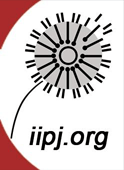Article Title
Success in Closing the Socio-Economic Gap, But Still a Long Way to Go: Urban Aboriginal Disadvantage, Trauma, and Racism in the Australian City of Newcastle
Abstract
The research presented in this article is based on a four-year place-based qualitative case study of Aboriginal success in addressing Aboriginal disadvantage in the Australian city of Newcastle. The article presents extracts from in-depth interviews with Aboriginal people working on a day-to-day basis with Aboriginal and/or Torres Strait Islander people experiencing disadvantage in this city. Interviewees define Indigenous disadvantage in a way that differs considerably from how it is defined in mainstream policy circles. They describe Indigenous disadvantage as being grounded in the histories of social exclusion from Australian society, rather than merely a contemporary phenomenon related socio-economic factors (i.e., lack of educational and employment opportunities). They indicated that it was (a) closely tied to Aboriginal experiences of displacement and trauma; (b) not just a material problem but a historical and social structural problem; and (c) unique to each community. For instance, urban Indigenous disadvantage is distinct from Indigenous disadvantage in remote areas. This supports the claims of Indigenous sociologist Maggie Walter (2009).
In doing so, the article more strongly aligns with a critique of a neo-liberal racial project, which defines Indigenous disadvantage within an individualistic framework of individual rights and in terms of socio-economic gaps, from the voices of Aboriginal representatives.
Acknowledgments
This article is produced from a study titled Indigenous Societies, Governance and Wellbeing: Indigenous Success in Addressing Indigenous Disadvantage and Improving Indigenous Wellbeing, which was made possible through the Australian Research Council’s Discovery Early Career Research Award funding scheme (project number DE120100798). The views expressed herein are those of the author and are not necessarily those of the Australian Research Council. This research has benefited enormously from, and would not be the same without, lengthy discussions and engagement with local Aboriginal people during the design, development, and feedback phases of the project. It would not have been possible without the contribution of interviewees who collaborated in the research. I thank everyone for their generosity, not only for sharing their time in discussing the research design, but also for participating in lengthy, meaningful interviews and sharing their knowledge, stories and rich understandings.
Creative Commons License

This work is licensed under a Creative Commons Attribution-Noncommercial-No Derivative Works 4.0 License.
Recommended Citation
Howard-Wagner, D.
(2019).
Success in Closing the Socio-Economic Gap, But Still a Long Way to Go: Urban Aboriginal Disadvantage, Trauma, and Racism in the Australian City of Newcastle. The International Indigenous Policy Journal, 10(1)
. Retrieved from: https://ir.lib.uwo.ca/iipj/vol10/iss1/3
DOI: 10.18584/iipj.2019.10.1.3

- Citations
- Policy Citations: 1
- Citation Indexes: 8
- Usage
- Abstract Views: 1005
- Downloads: 194
- Captures
- Readers: 25

Disclaimer
Although this research is based on comprehensive in-depth interviews with Aboriginal people who were generous and willing participants in this research, I would like to note, by way of respect to them, that this paper does not "speak for" or represent an Indigenous voice, or claim an Indigenous authority. Aboriginal interviewees were given opportunities to comment on the findings of this research in the form of three discussion forums held in April 2014, November 2015, and March 2017. They also saw a first and second draft of a lengthy community report that was circulated in November 2015 and March 2016, and earlier and later versions of the discussion paper that were circulated in October and November 2016. However, the writing of this article involves a non-Indigenous researcher imposing their theoretical and analytical understanding onto data that were collected from in-depth interviews with Aboriginal people.